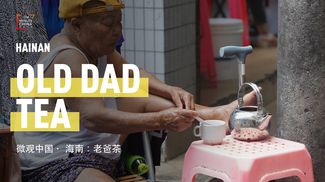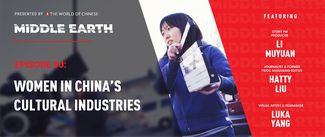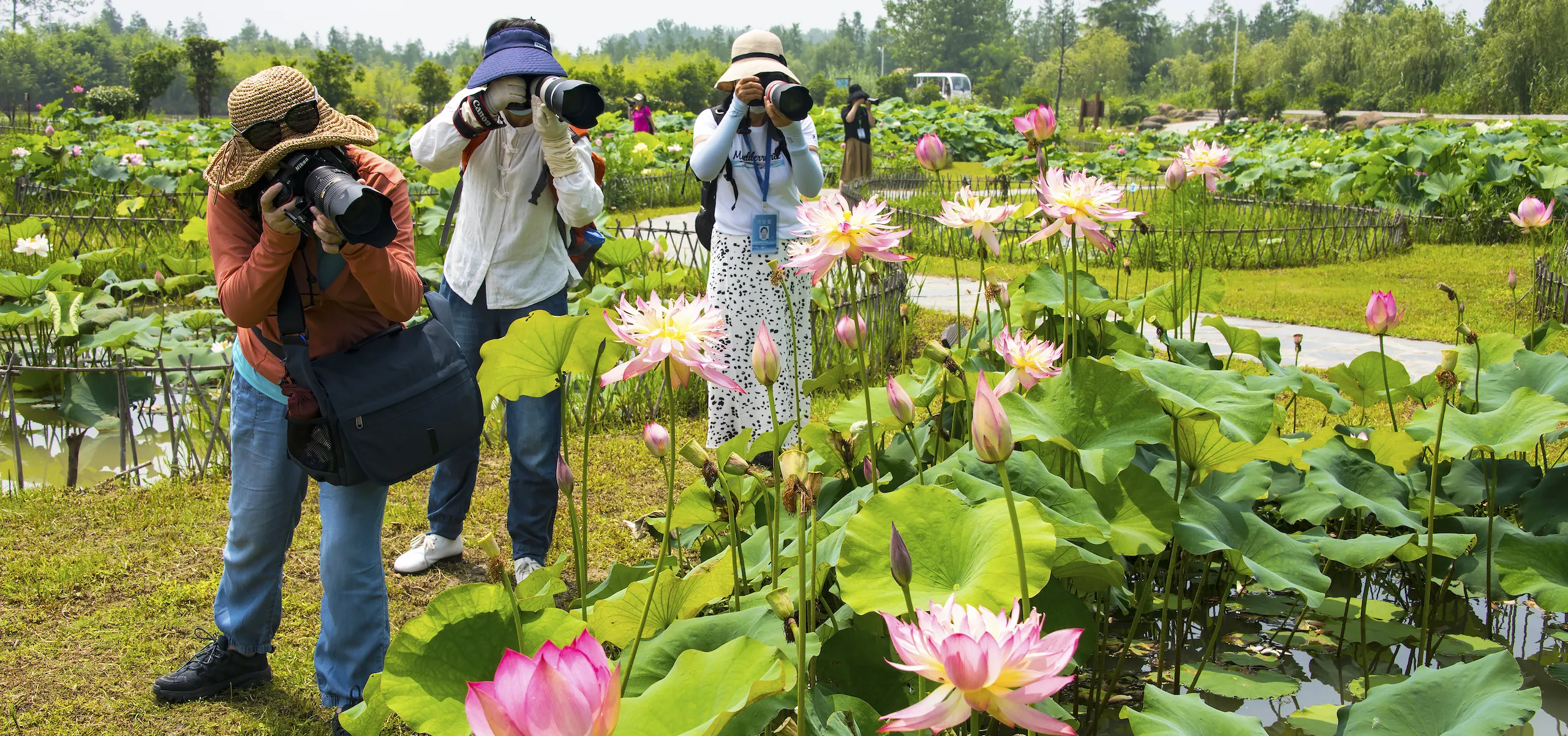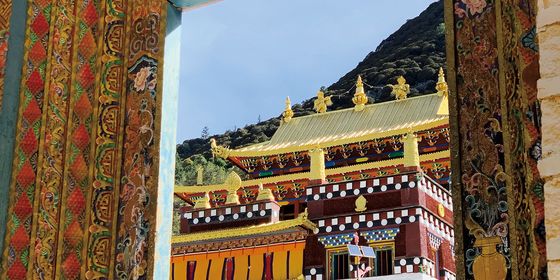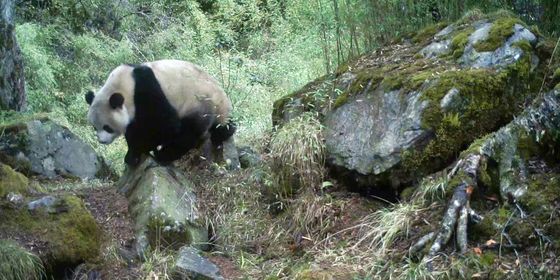In Jiangsu province, summer is the season for enjoying lotuses
With its gentle climate, dense water network, and nutritious soil, Jiangsu province has been the center of China’s lotus cultivation for over a thousand years. Each summer, locals and tourists attend festivals in Jiangsu to observe the stunning colors of the lotus flowers, row boats among the saturated lotus ponds, and enjoy succulent cuisine featuring lotus leaves, roots, and seeds. When the steamy summer weather gives way to thunderstorms, one could even take one of the huge lotus leaves as an “umbrella.”
In Nanjing, numerous streets and bridges are named after lotuses, while images of the flowers are often painted on homes as a symbol of harmony. In Chinese, the character for lotus, 荷 (hé) has the same pronunciation as the word for peace or harmony, 和 (hé).
From June onwards, when the lotus flowers bloom and lotus ponds are at their most spectacular, there are several lotus-themed festivals around Jiangsu. At Nanjing’s Mochou lake, for example, a lotus arts and culture festival runs from June to September, with lakeside camping, music concerts, and markets featuring lotus-based souvenirs.
At Xuanwu Lake, also in Nanjing, locals celebrate a tale about the birth of the popular “rice wrapped in lotus leaf (荷叶饭)” dish: In the year 561, Emperor Wu of Chen led his troops in a defensive battle against a force from the Northern Qi at Jingkou (today’s Zhenjiang in Jiangsu province). As his forces prepared to fight to death against the superior Northern Qi forces, the people of Jingkou brought gifts of rice and duck wrapped in lotus leaves. The legend has it that this fuel gave Emperor Wu and his army the energy they needed to finally defeat the invaders.




